
Throughout the 1960s, the full-size Chevrolet was the bestselling car in the entire world. However, its role in the marketplace was shifting rapidly, from big and basic family sedan to down-market luxury car. One of the surest signs of that transition was the growing percentage of buyers who ordered V-8 engines and options like automatic transmission, power steering, and air conditioning. Let’s take a look at the trends in big Chevy options between 1960 and 1970.
Paul’s recent Vintage Review of a 1963 Chevrolet Biscayne drew many comments from readers who recalled family members or neighbors with very basic full-size Chevys: three-on-the-tree, manual steering, non-power brakes — sometimes lacking even a radio.

How common were such stripped-down cars? To answer that question, I turned to the annual statistical issues published in the 1960s and 1970s by the trade journal Automotive Industries, which included results of their yearly manufacturer survey, reporting the installation rates of particular optional equipment as a percentage of model year production. This data isn’t granular enough to be of much interest to collectors (the results aren’t broken out by trim series or engine option, and there’s no correlation of different options ordered together), but it does give a good picture of overall trends.

One minor caveat for number-crunchers: Although Automotive Industries always broke out the Corvair, Chevy II/Nova, and Chevelle/Malibu separately, until 1964, the Corvette was still lumped in with the full-size Chevrolet. Since Corvette buyers in this era rarely ordered options like power steering, power brakes, or automatic transmission, this probably skewed the numbers slightly downwards. However, the Corvette accounted for such a small fraction of total Chevrolet production that the statistical impact was undoubtedly very small.

Another caveat is that after 1964, Automotive Industries no longer included make-specific figures for radio installation. They gave no specific reason for the change, but my guess is that the proliferation of different radio options (AM/FM, stereo, stereo type, etc.) made the results too complicated. Since there was no Chevrolet-specific data for 1965 to 1970, I omitted that column from the charts for those years.
On to the data …
Full-Size Chevrolet Option Installation Rates
In 1960, Chevrolet still sold a lot of sparsely equipped big cars: Forty-four percent of full-size Chevrolets had six-cylinder engines, 33 percent had stick shift, and only 35 percent were ordered with radios. (As I noted above, these figures DO NOT include the Corvair, which was always counted separately.) Only 27 percent of buyers ordered power steering, and just 11 percent ordered power brakes. Air conditioning was rare – ordered by only 3.0 percent of buyers — and a mere 1.0 percent of full-size Chevrolet customers specified power windows.
It was a similar story for 1961, although the installation rates for V-8 engines, automatic, power steering and brakes, radio, and air conditioning each crept up a little. The installation rate for power windows was now a lofty 1.2 percent.

With the introduction of the Chevy II/Nova for 1962, buyers who just wanted a new car at the lowest price had two other choices without leaving the Chevrolet dealer, which seemed to accelerate the trend towards V-8 engines and more power assists and convenience options on the big cars. The percentage of full-size Chevrolets ordered with V-8 engines jumped from 57.4 percent in 1961 to 65.1 percent in 1962. The take rate for air conditioning increased by 75 percent (from 5.6 percent to 9.8 percent), and power windows orders more than doubled.

In 1963, the year of the Biscayne in the Car Life road test Paul presented, 29.8 percent of full-size Chevy buyers still ordered a six, and more than one-quarter (26.4 percent) bought stick shift. This was the last year that less than half of all full-size Chevrolets had power steering, but more than half now had a radio, and one in eight had air conditioning.
There was another jump in 1964. With the introduction of the Chevelle/Malibu intermediate line, buyers who wanted a cheap family sedan could now get something about the size of a mid-’50s Chevrolet — which many Americans still thought of as a standard-size car — for $132 less than a six-cylinder Biscayne and $234 less than a six-cylinder Bel Air.


In other words, entry-level buyers were now asked to decide whether they thought the bigger Chevrolet was worth a price premium over the intermediate-size car. Those who said yes were more likely to also have the budget for some luxury options. More than half of full-size Chevy buyers now ordered power steering, while the installation rate for air conditioning jumped from 12.5 percent to 17.7 percent; it jumped again to 24.4 percent for 1965.
Looking at the statistics, it’s clear that each year, more and more and more full-size Chevrolets were ordered as relatively luxurious middle-class cars rather than cheap wheels. Power steering, which had been fairly rare on big Chevys in 1960, went into more than three-fourths of 1967 cars, and the take rate for air conditioning was closing in on 40 percent.


By 1969, fewer than 5 percent of full-size Chevys had a six-cylinder engine, and a mere 3.6 percent had three-speed manual transmission. Just 8.3 percent had manual steering, while only 37.9 percent didn’t have air conditioning.
The only real surprise in these statistics is the slow acceptance of power brakes. Until 1968, the take rate for these was less than 30 percent, and it wasn’t until 1970 that more than half of all full-size Chevrolets were ordered with them.


Other than power brakes, which became standard on the big Chevy line for 1971, it took a remarkably long time for many of these features to become standard on the full-size Chevrolet, and longer still for the strippers and poverty specials to fade away.

However, the latter had become increasingly rare. In 1960 or 1961, a new full-size Chevrolet with no radio and no power options was unexceptional — a typical example of the low end of a low-price brand. By 1970, such a car was probably either a fleet vehicle or a one-off price leader, ordered by a Chevrolet dealer to justify ads proclaiming “prices as low as …” without running afoul of local truth-in-advertising laws. There were undoubtedly still a few cheapskates who special-ordered minimally equipped Biscaynes or Bel Airs, having determined that they were the still best value in a pounds-per-dollar sense, but the statistics make clear that this was no longer commonplace.

Here’s the complete data, both in bar graph form and as a table.
Full-Size Chevrolet, Optional Equipment Installation Rates, 1960–1970
| Model Year | V-8 | Auto | Power Steering | Power Brakes | Radio | Air Con. | Power Windows |
|---|---|---|---|---|---|---|---|
| 1960 | 56.0% | 67.0% | 27.0% | 11.0% | 35.0% | 3.0% | 1.0% |
| 1961 | 57.4% | 70.2% | 32.9% | 11.3% | 37.7% | 5.6% | 1.2% |
| 1962 | 65.1% | 72.6% | 41.2% | 15.3% | 45.4% | 9.8% | 6.6% |
| 1963 | 70.2% | 73.6% | 46.9% | 16.8% | 50.6% | 12.5% | 7.3% |
| 1964 | 76.0% | 76.9% | 52.8% | 17.4% | 56.7% | 17.7% | 7.7% |
| 1965 | 81.5% | 81.6% | 63.1% | 22.5% | N/A | 24.4% | 8.5% |
| 1966 | 86.2% | 85.3% | 69.3% | 24.2% | N/A | 29.8% | 10.5% |
| 1967 | 89.9% | 88.7% | 77.2% | 29.0% | N/A | 39.3% | 11.6% |
| 1968 | 93.1% | 93.1% | 84.6% | 34.8% | N/A | 47.6% | 13.6% |
| 1969 | 95.7% | 96.0% | 91.7% | 42.5% | N/A | 62.1% | 16.0% |
| 1970 | 97.5% | 97.9% | 95.2% | 60.5% | N/A | 71.8% | 19.0% |
(N/A = data not available)
Aside from rising U.S. incomes, I think these trends reflected rising prices for full-size cars. By 1970, the cheapest full-size Chevrolet you could buy started at $2,787 in the U.S. If that was as far as your budget could stretch and you weren’t running a taxi company, a decently equipped Nova would be more pleasant to live with, probably have better resale value, and cost about the same (and those dollars would go further still at a Datsun or Toyota dealer).

If you grew up with minimally equipped cars, it can be tempting to feel nostalgic about these strippers. As I can testify from painful childhood experience, a lack of add-ons does not necessarily make a car more reliable or less troublesome, but on any given list of optional or even standard equipment, there are likely to be items that some people could just as happily do without, or would rather not pay for. On the other hand, once you get used to a little luxury, it can be hard to go back, especially if you’re not really saving much money by doing so.
Related Reading
Automotive History: Who Killed the Big American Car? (by Paul N)
Vintage Review: 1963 Chevrolet Biscayne 283 V8 With Three Speed Manual – An Ideal Car For The Traveling Salesman In A Hurry (by Paul N)
Curbside Classic: 1964 Chevrolet Bel Air Six – Try A Little Tenderness (by Paul N)
Cohort Classic: 1965 Chevrolet Biscayne – Voluptuous Hips For Cheapskates (by Paul N)
Vintage Car Life Road Test: 1966 Chevrolet Bel Air Six With Powerglide – Just How Slow Was It? (by Paul N)
Want A 1967 Chevrolet Super Sport Six Cylinder Convertible? Ask For Model #16767, But Hurry, It’s Your Last Chance (by Paul N)
Curbside Classic: 1969 Chevrolet Impala – All Hail The King! (by Jason Shafer)
Curbside Classic: 1970 Chevrolet Impala – The Best Big Car Of Its Time (by Paul N)








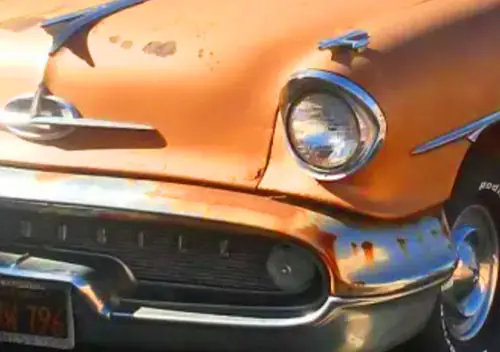
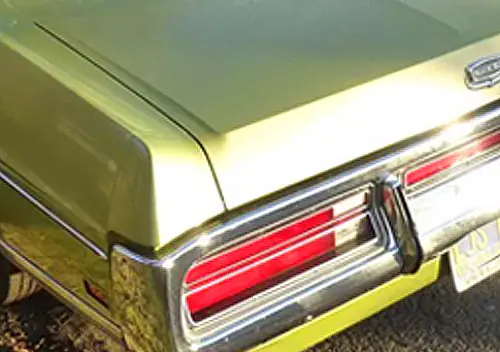
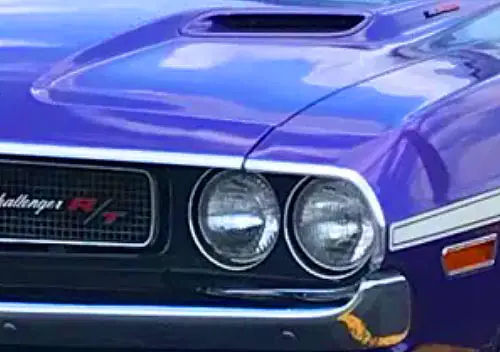

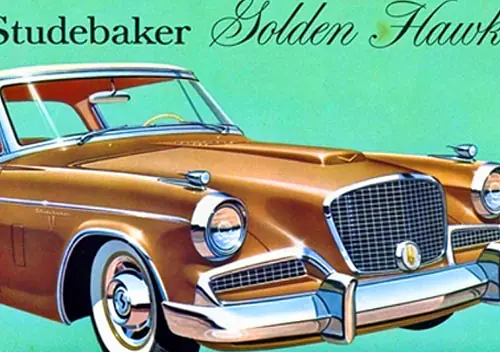
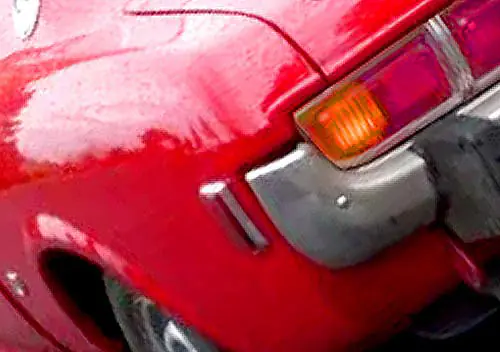

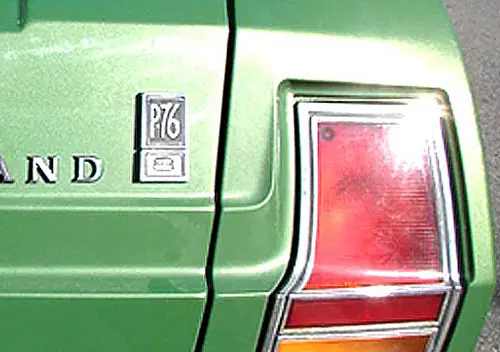
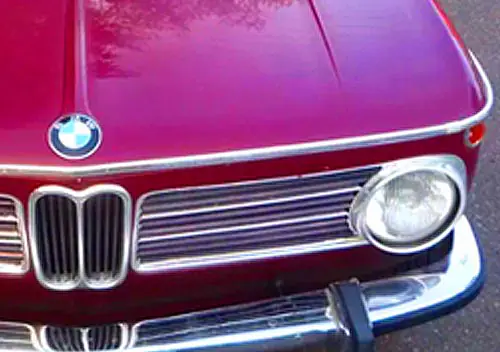
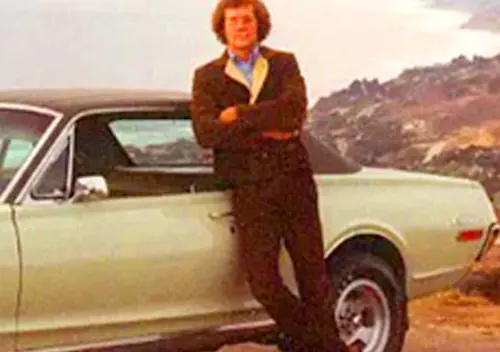
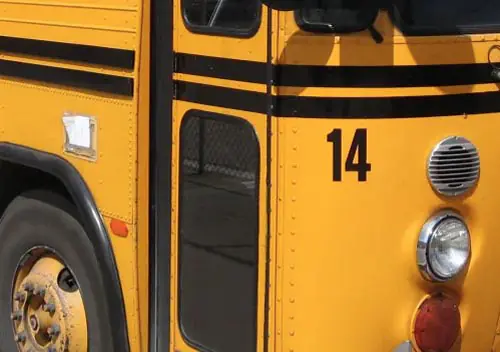
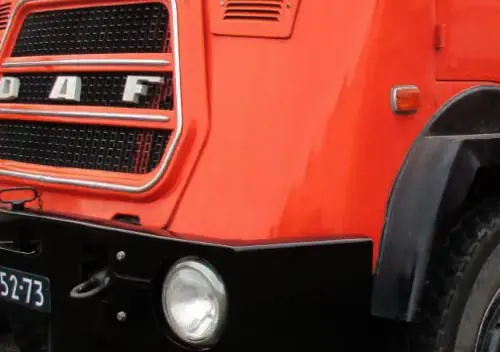
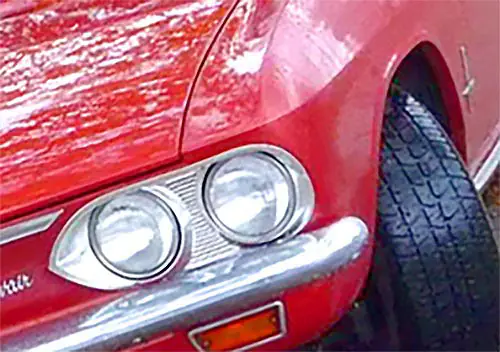
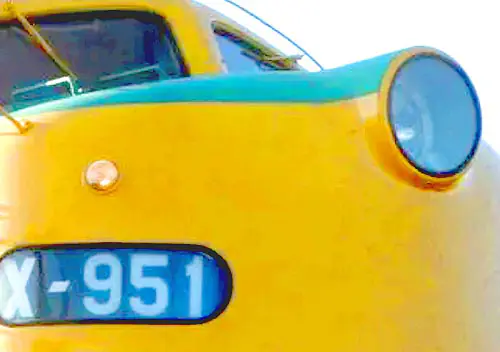
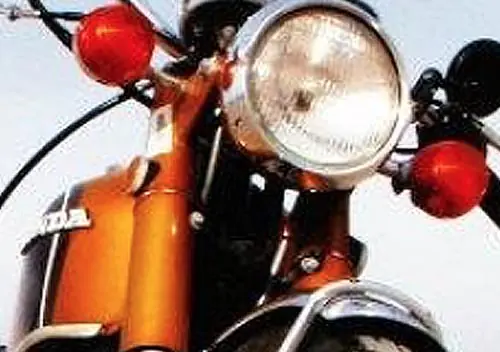
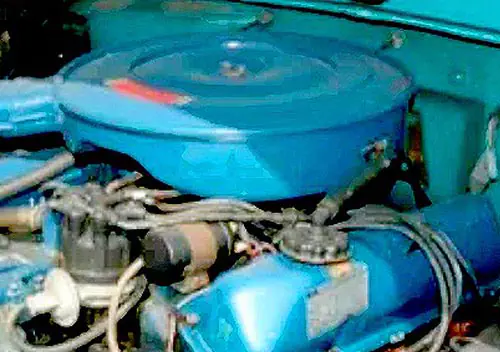
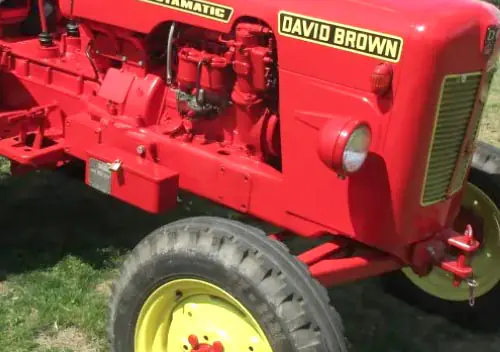


This was an interesting dive. It seems that by 1967-68 the typical Chevrolet was reaching what (in my world) became the “normally” equipped GM car through the 70s. V8, radio and (by 1969-70) air. Things like power windows, seats, mirrors took a long time to take hold among the middle class of the midwest. And in my experience, GM buyers lagged others in adopting cruise control.
About 1978 or 79, a friend bought a 64 Impala 4 door sedan from an older relative. The car had air and power windows, and was the first 64 Chevy I had ever seen that was so well equipped.
Our small rural town Chevy dealer stocked full size, six cylinders thru 1966. After 66, all the sixes were in pickup trucks. He seldom stocked Chevy Ii’s. The profit margin must have been considerably less on those.
I knew two families who owned ’64 stripped Biscaynes. Both were professors with above average income, both were cautious about all spending, both were into stock investment, not a common hobby at that time.
Residential and commercial air conditioning enabled a population shift south and westward. More frequent traffic jams, vinyl seats, and synthetic clothing made car A/C necessary if your house and work were cool. By 1970, cars generally lasted longer, and there were more used non-rustbelt cars available for people who wanted low-cost large cars. People who were parents during the Depression were old and buying fewer new cars.
AC was required after the dropping of wing windows and outside air vents in 68 or 69.
Really great and useful data, both this post and yesterday’s on manual transmissions. Information I have never seen before. Wonderful charts and graphs!
I’m particularly surprised that radio installation was only 1/3 in 1960. That seems low. People like automatic transmissions, with 2/3 ordering it. V-8’s are also rarer than I thought–just under half of the cars were actually sixes. All of this is quite unexpected.
Power steering–which really helps these big ’60 Chevys–only 27%? Wow. Bottom line: there were a lot more basic “strippers” out there than expected–even in the Impala series. The salesmen didn’t really do a good job “upselling”, did they? What about the test drive in the well-optioned demonstrator? The classic sales pitch is that the options really cost little to nothing, since the buyers make up the cost in greater trade-in value.
So my ’59 Biscayne is actually kind of spiffy–it does have a radio, Powerglide, and now two-tone paint. Oh, and the optional “rockets” on the front fenders. And full wheelcovers with whitewall tires. Pretty fancy!
I saw the title and immediately thought of you and yours before I even clicked on the story.
Thanks, Stephen. My working theory goes something like this: As you know, Chevrolet had more dealers than Ford in this era. I found some intriguing data on dealer franchises that suggests that in the postwar period (1946 to 1950), Chevrolet made big inroads in adding dealerships in rural areas, which I think had previously really been Ford’s domain. I unfortunately don’t have data that granular after 1950, but my guess is that into the late ’50s and early ’60s, a big chunk of Chevrolet’s business was still from smallish rural and small-town dealerships. In those areas, people didn’t necessarily have a lot of money to spend (and maybe didn’t see the need for power steering the way urban drivers did), and with a small customer base, it didn’t necessarily pay for salespeople to push too hard, lest they lose a customer for good. Having that base let Chevrolet sell more cars, but a fair chunk of those were fairly basic.
Thanks for a very informative read, Aaron!
I’m wondering why the power steering take rate lagged so far behind that of automatic transmissions. At about half the cost, it seems like a no-brainer. It makes steering so much easier in low-speed maneuvering, and I can’t believe many would care about the loss of road feel.
To repeat what I’ve said before, my mother was truly an outlier in 1967 when she bought her Bel Air 6 with only one option — an AM radio. (Photo is after my younger brother tried to hop it up by raising the rear end and removing the dog dishes.
I will wager that the percentage of big Fords with sixes during this whole decade was significantly lower. Chevy had of course made its whole success and reputation with its ohv sixes, and loyal Chevy buyers kept buying them. And of course it was the opposite with Ford.
As to Plymouth, my guess is that it was in between the two, probably closer to Ford. My best friend’s dad did buy a new Fury III sedan with the /6 and TF in 1965. That seemed a bit odd at the time.
For the most part, although there were a surprising number of year-to-year fluctuations: The percentage of six-cylinder full-size Fords would go down and then up and then back down again, whereas for Chevrolet the curve was consistently downward at a fairly steady rate.
In my first year of high school in the late `60s, I used to have a newspaper route to deliver the NY Daily News before I went to school. The owner of the franchise bought a new `68 Bel Air 4 door. Not a total stripper, this dark blue Chevy had a ‘small V 8′ as the owner called it, black vinyl interior, automatic, power steering, and a radio. It also had some chrome trim and real wheel covers. We used to call it the “FBI Car’ for obvious reasons-it looked like a car the Feds would drive. Practically an Impala in everything but its name.
Almost forgot-it had factory in-dash air conditioning.
Another nice article .
Chevrolet made a big splash in…?1941? when Saginaw Gear Division released it;s recirculating ball steering box, this reduced the steering effort by close to 50% as did those rock had bias-ply tires used then .
I still like 6 cylinder cars, many of the late 1970’s Impalas / Caprice’ were sold as fleet cars, A/C & V6 powered…..
-Nate
I suspect that in 1960 a lot of Chevrolet buyers were traditionalists. They gave the Corvair the side eye because it wasn’t traditional at all, so the cheapest “real” Chevy was a Biscayne.
As this post points out, as the Chevy II and Chevelle were gestated, traditional Chevrolet buyers had cheaper options. I absolutely agree with the premise that I would rather own a Chevy II or Chevelle with several well-considered options than a barebones Biscayne or even Bel Air.
To expand on your theory, many of these “traditionalists” grew up during the Depression and were careful about spending money, even when they later had some. Their kids, on the other hand, had it much better and when they started buying cars around 1960 were much more amenable to spending on some nice options. Another factor was the rising real incomes in the economically prosperous sixties, which put more money in the pockets of average Americans. Another 500 bucks for a V-8, automatic and power steering and brakes was nothing, especially spread out over a three year loan.
Aaron, another fine piece. You have certainly been a great addition here at CC.
Had Chevrolet offered a six with manual here my dad would have got one, he did like Chevys but didnt like V8 engines, but the options list here was more sparse than in the US and a Chevy was meant to be more upmarket thanks to tariffs pushing the price up than other GM six cylinder cars so the six wasnt offered.
Reaching back a year earlier, my mom had a 1959 Biscayne. It had 3 speed straight drive, an AM radio without pushbuttons, and a two-tone paint job (probably a 6 cylinder too). By the time 1969 came, she had a 1969 Impala 4 door sedan with 350 V8, automatic transmission, air-conditioning, push-button AM radio, and power steering (but no power brakes). In between she had a 1966 Impala 4 door hardtop, 2 tone, automatic transmission, pushbutton AM radio, power steering and a 327 V8.
My grandfather had a 1960 Biscayne. I don’t remember any options on it, but it was pretty standard fare.
“straight drive”… haven’t heard that term used for a long time! One did hear that expression used mostly by older folks back then, I’d completely forgotten that.
Man, I love stuff like this. Dad’s ’64 Biscayne “company car” (he was self-employed), bought off the lot, was almost pure – AM radio, but a six, 3-on-the-tree, unassisted steering and brakes, no A/C (in Texas – yecch), and definitely no power windows.
So if I’m using your figures right, strippers like Dad’s were only about 1.4% of full-sized ’64 Chevys.
Back when it was on school carpool duty in the late ’60’s, I was sure nobody drove a car as stripped as Dad’s. Pretty surprised (vindicated?) to learn I wasn’t exaggerating 😉
The data unfortunately can’t really be “stacked” like that: It just measures the installation rate for each individual option, based on annual surveys that the manufacturers filled out. Because buyers in those days could order most options à la carte, having or not having one option didn’t usually tell you whether it had (or didn’t have) other equipment.
…aw man, you mean non-selections can co-vary too? 😉
Those six cylinder engines in the huge engine bay look SO easy to work on.
RE: Radios By 1960 there were pretty good aftermarket AM radios available, much cheaper than GM charged and pretty easy to install. Throughout the 1960s and on the aftermarket radios got better and better. AM/FM, cassette, 8 Track, were all available with better sound quality at very good prices. Speakers in all quality and price ranges were also on the market.
I knew several guts who installed their own radio. I expect that this may be a small factor in low sales of factory radios.
My family had a 57 Plymouth with an aftermarket radio.They bought it used and I don’t know if it came that way or if it did not have a radio and my dad installed it. I do know that when they replaced it with a 61 Olds Dynamic 88, which was purchased new, they ordered ithe Olds without a radio and transferred the one from the Plymouth. We still had the Olds when I started to drive, and then there were a couple of things about the radio that really annoyed me. First, it used tubes, not transistors, so it took forever to warm up. Secondly, it did not have push buttons for the station selection and it was hard to tune, so I never switched stations when I got to borrow the car. No rock and roll for the teenager son!
I was going to note this too. At least by the ’70s, I recall several dealers pushing aftermarket radios and tape players in their showrooms, presumably because they were more profitable for the dealers. Also, there were more choices especially regarding tape players and speakers, and some had more features and better sound quality.
By the late ’70s it was common to order an AM radio even if you wanted an aftermarket stereo, just to get an antenna and wiring harness. Later, manufacturers would offer a radio prep package option.
Good point about factory versus aftermarket radios. Seems like a radio was a big profit item for the dealer, considering how much the manufacturers wanted for one. OTOH, those factory radios were quite stout with few (if any) problems with one. Other parts might fail, but the radio ‘always’ worked.
In that regard, I can easily see many buyers foregoing a radio in lieu of a more cost-effective aftermarket installation and, instead, putting that radio money towards a more useful creature-comfort item like a PowerGlide and/or A/C.
This would jibe with this being a time when aftermarket radio installation shops began springing up for those who didn’t feel like going to the trouble of a DIY install, typically ordering a radio from a place like JC Whitney or getting one from a big-box discount store like Kmart.
The V8 acceptance chart catches my attention. The take rate goes up incrementally each year till it is almost 100%. Why? Was it psychological? Demographics? I’m 17 in 1970 so not buying a full sized car. This is still my father’s time. Marketing?
I think it’s a matter of weight – as overall weight increases, the six feels so much less powerful. By the late 60s, a full size car with a six would feel remarkably anemic.
Two factors: Real income grew substantially during the ’60s, hence the move towards better equipped cars. And real average speeds increased substantially. In 1960, the interstate system was just getting started. By 1970, many of the key segments were built. Americans drove more, and faster.
“Keeping up with the Joneses” was a very real thing too.
Does anyone know why power brakes lagged so far behind everything else? The article noted this as surprising, but I didn’t catch a why. I can’t imagine springing for the v8, auto, power steering, & even air, yet skipping the brakes. Apparently 10% of buyers did just that looking at the graph. Even in 1970 modern traffic must’ve been getting bad enough to need all the stopping power you could get. Given the variability of combinations of the time, it’s not inconceivable that at least one car may have been equipped with power windows yet not power brakes, though I can’t imagine that.
Power brakes didn’t increase stopping power on drum brakes. It just made it a little easier to stop. GM was slow to adopt power disc brakes (Ford and AMC did so sooner), except for the Corvette. Plus, for most driving and drivers, manual drum brakes were adequate. (I still own and drive 3 manual drum brake cars.)
Mike, I think that 4-wheel drum brakes didn’t need as much power assist as one does with disc brakes. I think that when optional disc brakes were introduced, many carmakers required upgrading to power assist in order to get discs.
Good point, Evan! Drum brakes were normally “self-energizing” (duo servo), where disc brakes are not.
The power brakes on my great aunt & uncle’s ’56 Olds (which we inherited) had very little pedal travel (sort of like the Citroen brake button), which would have been very weird for someone used to manual brakes, to say nothing of the big difference in effort required. As a widow, she bought a ’68 Skylark with manual brakes, I assume her choice. I found it a bit tricky to go back and forth between power and manual.
To add to what’s already been said, power drum brakes of the era tended to be too sensitive — it was difficult to modulate the brakes properly. Power assist wasn’t really necessary.
I recall a time when my youngest aunt was driving her older sister’s 1961 Olds Dynamic 88 with my brother and me in the back seat. The car had power drum brakes, and she overreacted to a driver cutting across her path. I was sitting behind the empty front passenger seat (no belts of course back then) and was thrown against the folding front seat back when she braked hard.
My 68 Mustang has manual drum brakes while the 65 F-100 has power drum brakes after I added power assist. In this truck the power drums are definitely not too sensitive.
Thank you all for your insight! Learning to drive in the 90s I’ve only once briefly driven a car older than the 70s & don’t recall much of the experience.
Great article and research and writing, Aaron! We should note that the lovely ’63-64 dash (I really think that was Chevy’s best dash design of the ’60’s) has an aftermarket AC unit. Factory air was integrated into the dash by that year of Chevy.
I was wondering the same thing. My folks had a ’66 Dodge Polara with aftermarket A/C that was put in either by the dealer or a 3rd party shop shortly after buying the car. I suspect many people who bought Chevys off the lot in the early to mid ’60s couldn’t find one in their favored color and feature set with A/C so instead bought a car without it and had an aftermarket A/C installed. I don’t know the relative prices of factory and aftermarket air – was the latter cheaper? If so, I imagine some buyers bought a non-A/C car and then installed aftermarket A/C to save money. By the late ’70s the popularity of aftermarket air seemed to be dwindling; the unit in our Dodge was not up to performance of factory A/C and that was the general reputation of these. At least ours looked remarkably built-in, not the usual clumsy box under the dash.
Aftermarket AC was much like an aftermarket radio: you might save 1/4 to 1/3 the cost of factory AC or radio. And, a properly installed aftermarket AC could certainly put out the cold air, which is also why they were popular.
That explains my mother’s remark that their 1964 Plymouth Valiant was unusually well equipped. It had air conditioning, automatic and I presume power brakes and the 225 slant 6. This replaced a secondhand full size Ford so they clearly leaned toward a better equipped car for the same money. That was also their last American car for 30 years. The Valiant was supplanted by a used Mercedes S class and replaced as the second car by a BMW 2000 with manual transmission and no AC.
This set a pattern of a high low mix of one nice car for family trips and one basic car for commuting and errands which leads to the question of multi car households. Was the “good car”/”station car” common? Where I lived in the 70s it was normal to have one newish sedan or station wagon and a second car that could be a sporty car or a beater, or both in the case of the Corvair Monza up the street.
My father bought five new cars in the 1960s and 70s with each one having more features than the previous one. First was a 1960 Ford Falcon – very basic, next was a 1963 Ford Fairlane 500 – first car with V8, then a 1965 Plymouth Fury II – first car with automatic and power steering, then a 1970 Meteor Rideau 500 with power brakes and finally a 1975 Chevrolet with air conditioning.
Some general notes: All except the Fairlane had AM radios, the Fairlane had no radio. None of these cars had a clock, power windows, power locks, power seats or cruise control.
The second car that I owned was a 1966 Ford Custom 500 bought in 1975 with six cylinder automatic, AM radio and no power options. I could parallel park that car more easily than any other car I have owned because you had to have it lined up before you tried.
My grandfather had a 1959 Ford Custom 300 six cylinder manual with power brakes, very touchy as I recall. I think this car turned my father off of power brakes. My father acquired this car in 1969 when my grandfather quit driving and he drove it to work on a regular basis. It replaced our previous second car a 1948 Chevrolet Fleetline Aero Sedan. The Ford was replaced by a 1967 Chevelle 300 with six cylinder manual and no power assists in 1972. The Chevelle was short lived and replaced by a 1966 Dodge half ton later that year also a six cylinder manual without power assists. Two more second hand Dodge trucks followed, a 1971 D-100 in 1977 with a six cylinder automatic and no power steering or brakes and a 1976 Adventurer D-100 Club Cab with V8 automatic, power steering and power brakes in 1978.
A general observation is that where I grew up in western Canada compact cars (including imports) were driven either by younger people buying their first new car, retirees or as second cars for rich people. Most mid size cars were two door hardtops driven by young professionals. People with families tended to drive full size cars and would prefer a Biscayne over a fancier Malibu because the Biscayne was a bigger car. We also had a lot of gravel roads at that time and the belief was that compact and mid-size cars didn’t stand up as well.
In general, all the listed figures would probably be significantly lower for Canadian cars through this period. There was obviously a fair amount of overlap between American and Canadian automotive preferences, but I think the Canadian bell curve was skewed towards the cheaper end, thanks to differences in real income. I assume this was particularly true for pricier options like air conditioning, which represented a sizable jump in total price.
My uncle bought three new Chevrolet sedans in the 60’s. A yellow two-door 60 Biscayne was purchased off the lot – the only options were radio and heater. A white four-door 63 Bel Air sedan was factory-ordered, again with radio and heater only. In 1966 he factory-ordered this red Impala four-door sedan with radio and heater only! The dealer required a substantial deposit because they quite rightly said no one would buy an Impala so equipped if uncle did not take delivery. The Impala was the only one of the three I drove, with a newly obtained license. The six was quiet, smooth, and had enough power to safely drive the car, especially with three-speed manual. But boy was that big car hard to park without power steering. Even stranger, it was my aunt’s daily driver for her job as an executive secretary. People in the Midwest tended to be very thrifty and I could provide many examples of this kind of purchase within my family and neighborhood. Only in retirement in the late 70’s did this uncle purchase a new Chevrolet (Monte Carlo) that was nicely equipped with V8, power steering and brakes – and A/C.
An interesting article-my parents drove Chevrolets as far back as I can remember-a ’54, ’56, ’58, ’60, ’62 and ’65. They all had six cylinder engines, powerglide, and that was about as far as the options went. They were all four door models-save the ’62 which was a two door; the 56 was a 210 I believe, the 58 a Biscayne, the 60 a Bel Air and the 62 and 65 were Impalas. By 1966 they were apparently feeling a little more financially comfortable and traded the ’65 in for a ’66 Pontiac Catalina. They never bought another Chevrolet.
In 1971 I enlisted in the Air Force in Charlotte. My Recruiter, a Master Sergeant, had an Air Force issue 1967 Chevrolet Biscayne sedan, with a column shift, delete radio and clock and no a/c. I offered MSgt Fitzpatrick to go in my car, a 1970 Maverick with a/c as it was a
hot day for us to drive to the processing center on Pecan Avenue. He said we can’t do that. It turns out the Air Force had a huge fleet of these cars for their Recruiting force across the country. I ended up driving a similar car in early 1972 on law enforcement patrol at Mather AFB, an ex-recruiting sedan. It did have a V-8. The motor pool issued us these cars to “run out” the mileage so they could be turned into the disposal agency on base.
“Way too common”, at our address.Nothing hi brow as a “BelAir” though. lol